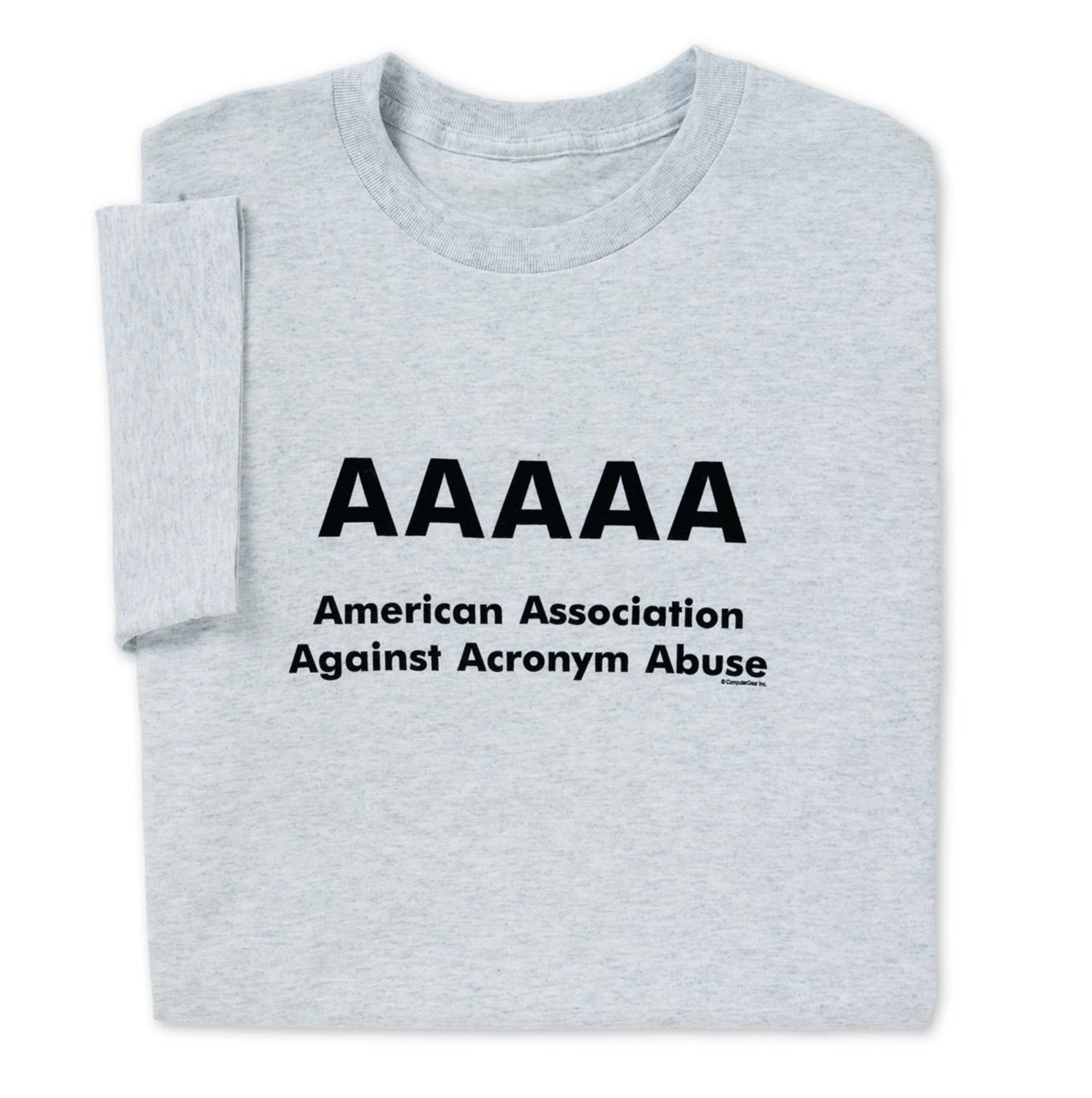Have you ever seen an acronym in a work chat or read it in an online article — or anywhere — and immediately had to Google it?
“Like, ummmmmmm, WTH does this mean? SMH.”
“Ohhhhhhh. I see. OK. TIL.”
The utility of acronyms is proven when the resulting phrase is easier to parse. The details are abstracted away nicely, hidden from view, and the reader gains quicker understanding. If the details aren’t essential to understanding and you don’t need to know what the concept is behind each word to grasp the bigger picture, such as DNA. — Douglas Hofstadter in Surfaces and Essences
Just like we don’t know all the inner workings of a cell phone, yet can understand how to operate it. We don’t call it a “cellular transmission device” — just “phone.”
Simpler is better, usually. WFM.
If acronyms are popular enough they can become common and useful — often lowercased — words such as radar, scuba, modem, or yuppie. These are considered “dead acronyms” because most people won’t know a) that they are acronyms at all, and b) if they do know they probably don’t remember the exact words represented. Which is fine.
Insight from REAMDE by Neal Stephenson, “Among geeks, the cool-soundingness of an acronym is more important than the existence of what it refers to.” Note, case in point: SCUBAT. Fun to also redefine existing like John did with PHP (People Helping People).

My tips and guidelines for acronym usage. YMMV.
- Consider your audience. Posting for an entire company? Assume no knowledge of your team’s insider lingo. Consider both your existing coworkers plus future hires that will join later and read back in the archives.
- Expand and explain at first use.
In formal writing for a broad audience, the expansion is typically given at the first occurrence of the acronym within a given text, for the benefit of those readers who do not know what it stands for.
Define the term the first time it appears in your text using longhand, with the acronym in parentheses. Then use the acronym, the shorthand, in the remaining text of the same post or page. “This week we launched The Awesome Sauce (TAS). Since inception TAS has truly been a team effort.”
A perfect act to follow is The Economist. The magazine has a particular style that encourages an inline definition for the first appearance of a new word, something possibly misleading — not just acronyms — unknown or proper nouns, too. For example, “Automattic, a web platform company, announced today…”
If you don’t define it — ideally using expansion at its first appearance — I will have fun with it.
- Use HTML title attributes. When publishing hypertext, say on your WordPress website, take advantage of hyperlinks and tooltips to give acronyms meaning and a visual explanation. You can use the
abbrtag with a relatedtitleattribute. Here’s an example: WP. Here’s a good visual example of the HTML code, from Mozilla:
- Beware lazy abbrevs such as pw, ty, yw. This may save you time in the moment, yet if you’re following along you’ll already be considering others’ needs above your own. Avoid the confusing usage by either typing the words out, or use a tool like TextExpander to do that for you. You’ll be known for your helpful attitude by using clear, unambiguous communication. If in doubt, spell it out.
- If you see something you don’t understand, just ask. Fun tip: you can play with your own version of the acronym’s meaning while you wait for the author to explain. At Automattic, when I see an acronym I don’t understand I’ll ask — but sometimes I can’t resist sharing back my phony interpretations on the thread, too.
Bonus acronymivia, HTH.
A recent fun acronym seen in my hometown, Tucson: BRO (Breault Research Organization, Inc). Heh, say it out loud. LOL.
More acronym geekery on Wikipedia — my favorite in the list there is PAYGO (pay-as-you-go). I learned the word “initialism:”
“Initialisms” are words where you can’t pronounce the resulting “word.” The spelled-out form of an acronym or initialism — what it stands for— is called its expansion.
FYI: this video is a funny take on how badly acronyms could go: “Corporate Acronyms: You may not know it, but some of the world’s most recognizable apps and brands are all acronyms.” YOLO.
TTYL.
A quick list of all the acronyms I used in this article, in case you’re like me and still learning a new one each day. In the order they appear above:
WTH: What the heck/hell (can also have an F at the end for f***)
SMH: Shake my head
OK: Okay
TIL: Today I learned
DNA: Deoxyribonucleic acid
WFM: Works for me
SCUBAT: Scaffolding contigs using BLAT and transcripts
YMMV: Your mileage may vary
HTML: Hypertext markup language
WP: WordPress
pw: Password
ty: Thank you
yw: You’re welcome
HTH: Hope that helps
BRO: Breault Research Organization, Inc
LOL: Laugh out loud
PAYGO: Pay-as-you-go
FYI: For your information
YOLO: You only live once
TTYL: Talk to you later


Leave a reply to Lance Willett Cancel reply